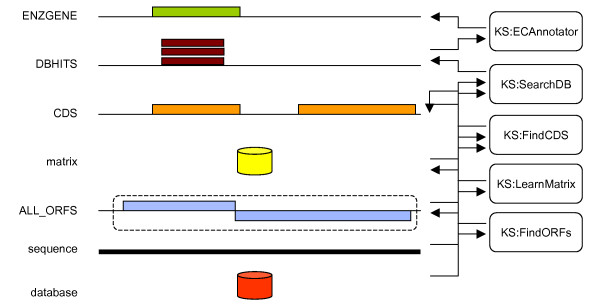Figure 5.
Example of a blackboard strategy to find and annotate gene putatively encoding for enzymes. The raw sequence is scanned to look for long ORFs (KS:FindORFs). These ORFs are then used to train a Markov model (KS: LearnMatrix) which is further used to find CDS's (KS:FindCDS). Each CDS (1_CDS) is then scanned (KS:SearchDB) against an enzyme database (database) whose entries are annotated with EC numbers. Finally, when a CDS gets sufficient matches with annotated enzymes and when the majority of these matches have the same EC number, then this EC number is transferred to the CDS annotation (by KS:ECAnnotator) to give rise to an enzymatic gene (3_ENZGENE). Note that, from the blackboard point of view, all objects that are manipulated by KSs have to be explicitly represented in layers. For instance, the database and matrix objects do have their own layers too. Also note that, for efficiency, the ORFs are not represented as individual features but are packed within a single set (dashed line).

